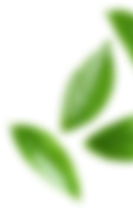Heeng (Asafoetida Powder): The Ultimate Guide to Benefits, Uses, and More
Heeng, commonly known as Asafoetida, is a pungent and aromatic resin obtained from the roots of the Ferula plant. Widely used in Indian, Middle Eastern, and Central Asian cuisines, this spice is celebrated not only for its unique flavor but also for its medicinal properties. From aiding digestion to enhancing the taste of vegetarian dishes, Heeng has been a staple in kitchens and Ayurvedic medicine for centuries.
In this comprehensive guide, we’ll explore the history, benefits, culinary uses, and potential side effects of Asafoetida powder, along with tips on how to incorporate it into your diet.
What Is Heeng (Asafoetida)?
Asafoetida is a dried latex gum extracted from the taproots of several species of Ferula, a perennial herb native to Iran and Afghanistan. The raw form has a strong, sulfurous smell, but when cooked, it transforms into a savory, umami-rich flavor reminiscent of onions and garlic.
In its powdered form, Heeng is often mixed with rice flour or wheat flour to improve texture and reduce potency. It is a key ingredient in Indian tadkas (tempering), pickles, and lentil dishes.
History and Origin of Asafoetida
-
Ancient Roots: Asafoetida has been used since Roman times as a spice and medicine.
-
Ayurveda & Traditional Medicine: Mentioned in ancient Ayurvedic texts for treating digestive disorders, asthma, and bronchitis.
-
Global Trade: Traded along the Silk Road, it reached Europe and India, where it became a crucial part of vegetarian cooking.
Nutritional Profile of Heeng
Asafoetida is low in calories but rich in bioactive compounds:
-
Ferulic Acid (antioxidant)
-
Coumarins (anti-inflammatory)
-
Phytochemicals that aid digestion
-
Minerals: Calcium, Phosphorus, Iron
Health Benefits of Asafoetida Powder
Aids Digestion
-
Stimulates digestive enzymes, helping break down food.
-
Reduces acidity and indigestion.
Relieves Gas and Bloating
-
Acts as a carminative, preventing gas formation.
-
Often used in home remedies with warm water.
Anti-inflammatory Properties
-
Helps reduce joint pain and arthritis symptoms.
Respiratory Health
-
Used in Ayurveda to treat asthma, bronchitis, and coughs.
Blood Pressure Regulation
-
Contains coumarins, which may help lower blood pressure.
May Help with Menstrual Pain
-
Traditionally used to relieve cramps and irregular periods.
Potential Anti-Cancer Properties
-
Early studies suggest anti-tumor effects, but more research is needed.
Boosts Immunity
-
Antioxidants help fight infections and strengthen immunity.
Culinary Uses of Heeng in Cooking
Essential in Indian Cuisine
-
Used in dals, curries, pickles, and chutneys.
-
Adds depth to vegetarian dishes (especially in Jain cuisine, where onions and garlic are avoided).
Vegan and Jain Cooking Substitute
-
Provides a meaty, umami flavor without animal products.
How to Use Heeng in Recipes
-
Tempering (Tadka): Fry a pinch in oil/ghee before adding spices.
-
Sprinkle on snacks: Enhances flavor in chaats and fried foods.
-
Digestive drink: Mix with water, ginger, and lemon for bloating relief.
How to Store Asafoetida Powder
-
Keep in an airtight container away from moisture.
-
Stored properly, it can last up to a year.
Possible Side Effects and Precautions
-
Excessive consumption may cause headaches or nausea.
-
Not recommended for pregnant women in large amounts.
-
Some people may be allergic to its compounds.
Difference Between Pure and Compounded Heeng
-
Pure Heeng: Stronger, more expensive, and used in tiny quantities.
-
Compounded Heeng: Mixed with flour/starch for easier use (common in stores).
Frequently Asked Questions (FAQs)
Can I use Heeng daily?
Yes, in small amounts (a pinch is enough).
Is Asafoetida gluten-free?
Pure Heeng is gluten-free, but compounded versions may contain wheat flour.
Does Heeng help in weight loss?
It may aid digestion, indirectly supporting metabolism.
Conclusion
Heeng (Asafoetida) is a versatile and powerful spice with numerous health benefits and culinary uses. Whether you’re using it to enhance flavors in cooking or as a natural remedy, this ancient spice deserves a place in every kitchen.
Try incorporating Heeng into your meals and experience its magic firsthand!

